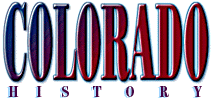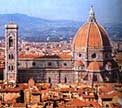|
|


Mr. Sedivy's
History Classes:









More Features:


 

 

|
|
Highlands Ranch High School - Mr. Sedivy
Highlands Ranch, Colorado

- Colorado History -
Fort Union
By David Sedivy
Fort Union Arsenal - William Shoemaker
William Shoemaker was handed the task of building the Fort Union Arsenal.
Shoemaker was appointed Ordnance Storekeeper in 1841, and then appointed
Captain and Ordnance Storekeeper in 1866. He proudly ran the arsenal
at Fort Union from its inception in 1851 until his retirement in 1882.
Shoemaker was constantly trying to improve his arsenal and to build
permanent structures. He wrote the ordnance department in Washington
in September, 1856, asking for a site to build a permanent arsenal,
and to ask for appropriations for new construction as soon as possible.24
Shoemaker's request was not approved, as well as the many requests
he made following 1856.
By December of 1860, Shoemaker's arsenal construction was still not
underway. With the exception of one storehouse and magazine built
of adobe, all of his buildings were threatening human safety. Finally
in 1866, Shoemaker had been given formal approval for the construction
of a new arsenal. He hired a local mason to build cisterns. The rain
ducts of buildings were to be connected to the cisterns. He intended
to have the water pass through a charcoal filter. By using this method,
he would not need cast iron pipes. He estimated that the cisterns
would each hold 15,000 gallons of water. Shoemaker's construction
of the third fort progressed at a rapid rate.25
Fort Lowell and Fort Sumner
In June 1869, Forts Lowell and Sumner, New Mexico, were abandoned
and discontinued as military posts. All of the ordnance and ordnance
stores from those forts were transfered to Fort Union Arsenal. Shoemaker
knew the closing of these forts was a sign of things to come.
By 1873, the arsenal was almost complete. In a report Captain Shoemaker
described Fort Union as Follows:
This arsenal is the depot for supplying
the territory of New Mexico and parts of Texas, Arizona, Colorado
and the adjacent Indian Territory. Fort Union Arsenal New Mexico is
situated one mile due west of Fort Union on a reservation belonging
to the ordnance department, one half-mile extent. The arsenal is enclosed
by a wall on four sides of one-thousand-feet each. The buildings consists
of two officers quarters and one set of barracks, one set of clerks
quarters, one armorer, one smith shop one carpenter, one saddler shop,
one main storehouse with basement, three smaller storehouses, two
magazines for ammunition, one stable for public animals with corral,
temporary outbuildings including, shops and storehouses. There is
a well with an abundance of pure good water. Also two cisterns of
eighteen thousand gallons each are always full in case of fire. The
buildings, walls and outworks are of adobe, set on permanent stone
foundations. The walls of all are heavy and well constructed.26
The Railroad / End of Fort Union Arsenal
By 1882, the railroad had reached that area of New Mexico and the
need for a standing army was diminishing. The railroad had taken over
trade, freight and passenger operations, so the Santa Fe Trail was
obsolete. Military activity in the west had slowed down so much that
the depot, arsenal, and troops were no longer needed at Fort Union.
Shoemaker announced his retirement on June 30, 1882, and asked permission
to stay in his quarters in return for watching over the arsenal buildings.
He was allowed to stay. On July 3, 1882, the army transfered lieutenant
Russell to Fort Union Arsenal. Russell's job was to abolish the arsenal
and begin demolition of the structures.27
On September 6, 1886, Shoemaker died. He was still living in the
house that he had built and he was still volunteer custodian of the
empty arsenal buildings at the time of his death. Within three years,
illegal salvage operations had started dismantling the arsenal buildings.
Shoemaker had been meticulous about the quality of his construction.
He had often hired talented civilian workmen who had done quality
work. In 1892, six years after his death Shoemaker's arsenal was gutted.
The End of Fort Union
Fort Union reverted to the original claimants of the Mora Grant, who
used the land for cattle ranching. With ranching operations came the
need to keep the cattle safe. Because the surrounding area offered
no shelter the animals tended to congregate around the walls of the
fort in search of shade or as a wind break. After the ranch hands
lost cattle to collapsing walls, they decided to bulldoze the most
hazardous areas. In 1949, bulldozer operator Lois Timm filled in all
the cisterns and wells. He also knocked down about twenty chimneys
to prevent them from falling on cattle. He worked his dozer in both
the third fort and arsenal areas.28
No battle was ever fought at Fort Union. Fort Union may have lacked
the flair and excitement of a cavalry charge, or the heroics of an
infantry platoon. But the men who served there supplied the southwest
with much needed goods and kept the Santa Fe Trail open. Without Fort
Union and the men behind the scene, there would have been neither
posts or battles nor southwest expansion.

Wagon ruts on the Santa Fe Trail near Fort Union, New
Mexico in 1905.
Ruts are still visible today in the Fort Union area.
Fort Union
| The Sante Fe Trail and Fort Union |
| Sumner - Ninth Military Department / The
First Fort Union |
| Early Arrivals to Fort Union, Daily Life
at Fort Union |
| Captain Grover - The New Fort Union, the
Confederate Threat |
| Fort Union Arsenal, William Shoemaker,
End of Fort Union |
Bibliography is available by email
request.
Back to the top of page
- Colorado History In Depth
-
Lecture Notes, Reading, and Information:
| The Cheyenne Migration
to Colorado |
| The Gratlan Affair, Massacre, Fort Laramie
Treaty |
The Cheyenne Social Club
| A Cheyenne War Story: Wolf Road, the Runner
|
| Cheyenne Traditions and Beliefs, Sacred
Stories |
| Horses, Warriors, War Pipe, Sweatlodge
Ceremony |
| Cheyenne War Parties and Battle Tactics
|
| The Scalp Dance and Other Cheyenne Dances
|
Americans from the East
| Thomas Jefferson, the Louisiana Purchase
|
| The Expedition of Zebulon Pike |
| Pikes Peak or Bust / Colorado Gold Rush
|
Colorado's Role in the US Civil
War
| The Civil War, Fort Wise / Fort Lyon
|
| Mace's Hole, Colonel Canby, F.C.V.R.
| Fort Weld |
| The Pet Lambs, John Chivington |
| General Henry Sibly, Battle of Valverde,
Fort Union |
Cripple Creek District Labor Strikes
| The Western Federation of Miners / State
Militia |
| The 1893 - 1894 Strike | The
Strike of 1903 - 1904 |
| The Mine Owners Association |
| Crimes and Military Rule in the Cripple
Creek District |
| Marshall Law in Cripple Creek District
/ End of the Strike |
Early Cripple Creek District
| Photos, Fire, and Life in Cripple Creek
|
| Other Colorful Towns in the Cripple Creek
District:
Gillett - Colorado's Only Bullfight, Victor, Independence |
| A Guide to the Miners' Gritty Lingo
|
More Colorado History
Information
| Bent's Fort Photos, Personalities, Plans,
and More |
| What Was Easter Like at Bent's Fort?
|
| Colorado Trivia,
Miscellaneous Old Photos,
Western Personalities, Forts, and More |
| Lullabies for Jittery Cows - Cowboy Ballads
|
| Heraldry of the Branding Iron |
| Project
Aims to Clear Infamous Cannibal, Alferd Packer |
| Lead Gives Alferd
Packer's Story More Weight |
| Legendary
Colorado Love Stories: Baby Doe Tabor & More
|
| Colorado Pioneer Women: Elizabeth Byers
|
| Early Denver Jokes / The History of April
Fools' Day |
Back to the top of page
|
|
|



![]() 9375 South Cresthill Lane
9375 South Cresthill Lane ![]() Highlands Ranch, Colorado 80126
Highlands Ranch, Colorado 80126 ![]() 303-471-7000
303-471-7000

